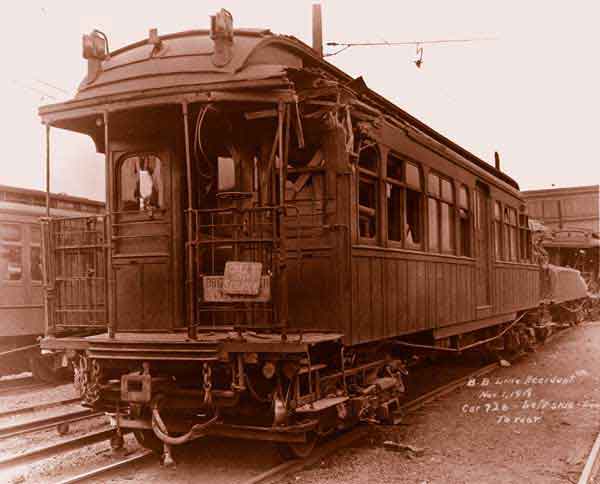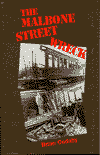|
The Malbone Street Wreck
by Brian Cudahy
A Measured Account
of the Worst Rapid Transit Tragedy
Reviewed by Paul Matus
On
November 1, 1918, a five car wood-bodied elevated train on the Brighton
Beach Line of the Brooklyn Rapid Transit Co. smashed into the wall of a
recently opened tunnel at the intersection of Malbone Street and Flatbush
Avenue, killing, all told, about 100 people. This wreck, the worst
rapid transit accident in U.S. history, imprinted itself on the
consciousness of the people of Brooklyn and far
beyond.
When I was
growing up in Flatbush in the '50s, folks were still talking about
"Malbone Street." Though the tragedy was almost four decades past, it was
still a topic of conversation, as there was hardly a Flatbush family that
was untouched. If one of your own was not on that fateful run, you knew a
neighbor, a co-worker, a friend, who was.
Not too much had been
published about the wreck at mid-century, save for the occasional
tabloid-style horror story. In the decades since a number of books have
included sections on Malbone Street, including Cudahy's own Under the
Sidewalks of New York and Stan Fischler's The Subway. The
two accounts represented polar opposites in Malbone Street reporting,
Cudahy's was quietly factual, while Fischler's was colorful but contained
wild inaccuracies.
Any
discussion of
the Malbone Street Accident among rail or history buffs has thus tended
to be a frustrating one, as those who have done some independent research
often find themselves spending more time refuting popular misconceptions
of the facts of the incident than in discussing the facts
themselves.
So it
was with considerable anticipation that I received the news, several
months ago, that Fordham U. Press would soon release Brian Cudahy's full-length
book on Malbone Street. Cudahy has written a number of books on rapid
transit subjects and I know him to be a careful researcher who would, I
expected, tell the story as it happened, answer the reasonable questions
that have been around for 80 years, and firmly reject the doubtful
research, gossip and just entertaining lies which have crept into the
historical narrative.
Has he succeeded? By the
standard I've set above, he has.
Yet the author cautions us that
“[t]his is not a definitive account” because “too much remains unknown,
too much lies beyond my grasp, and too many questions are answered
imperfectly." Cudahy was especially disappointed that, despite extensive
effort, he could not find the trial transcripts which could have shed
additional light on the subject. He has had to take educated guesses on
some subjects, and in other cases chooses between competing stories. I do
not agree with all his choices, and think others bear further examination,
and I would like to have known how he reached some of
his conclusions in cases where he does not mention alternate
explanations.
Continued on
page 2

The
Malbone Street train sits in the BRT's 36th St. Yard after salvage.
The relatively minor damage to 726 shows why most in the first car
escaped serious injuy. Even the window of Motorman Luciano's cab
(left, front) is intact. Not so lucky were those in trailer car 80
immediately behind, with half the car sheared away. Behind 80 is motor car
725, also almost unscathed. Chillingly absent between 80 and 725 would
have been car 100, the remains of which were dismantled at the
scene. Paul Matus
Collection
|

